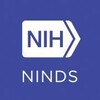
Pharmacogenetic Trial and Long-term Follow-up of the PRISMS Trial (PRISMS-15)
Multiple SclerosisThis study, PRISMS-15 is a single visit, exploratory pharmacogenetic trial and long-term follow-up of the PRISMS (Prevention of Relapses and Disability by Interferon beta-1a Subcutaneously in Multiple Sclerosis) trial. The aim of this trial is to provide additional data on the driving factors of IFN beta response and the long-term outcomes of Rebif® treatment. This is a Phase IV trial involving subjects who previously participated in the PRISMS trial. To address the trial objectives, a single visit will be performed, at least 3 months after the onset of the last relapse.

Avonex 15 Year Long Term Follow-up Study
Multiple SclerosisThe Avonex Fifteen-year Long-term Follow-up of Patients with Relapsing Multiple Sclerosis: ASSessment of Drug Utilization, EaRly TreAtmeNt, and Clinical OutcomEs (ASSURANCE), was a single-time-point evaluation of patients conducted 15 years after the pivotal MSCRG study, evaluated the impact of IM IFNβ-1a treatment on long-term disability and Quality of Life outcomes in patients who completed 2 years in a previous Multiple Sclerosis Collaborative Research Group (MSCRG) study.

Evaluation of Nutritional Status and Fatigue in Patients With Multiple Sclerosis
Multiple SclerosisMultiple sclerosis (MS) is a chronic progressive neurological disease, the leading cause of disability after injury accidents in young adults. Among the many symptoms, fatigue is very common with a significant impact on quality of life. Also, the disability caused by multiple sclerosis can alter food intake and can cause nutritional deficiencies. Nutrients such as proteins, minerals (iron, calcium, magnesium), some vitamins (B12, 25 OHD) are often deficient in this population with consequences in physical performance such as endurance and muscle strength. We propose to study the link between fatigue and shortcomings encountered in a defined population of MS patients.

JC Virus Reactivation in Multiple Sclerosis
Progressive Multifocal LeukoencephalopathyMultiple SclerosisJC virus is a benign virus which infects approximately up to 90% of the normal adult population. However, it may be reactivated in people who have a decreased immune function as in HIV infection, cancer, chemotherapy, transplant recipients, or in MS patients treated with natalizumab (Tysabri). In these patients, JC virus can cause a severe brain disease called Progressive Multifocal Leukoencephalopathy (PML), for which there is no cure. As of September 2013, 400 MS patients in the world, who have been treated with natalizumab, have developed PML. The risk of PML is approximately 5 patients in 1000 after 24 months on the drug. Researchers do not know exactly in which cells of the body the virus lives but it has been isolated from the blood, urine, cerebrospinal fluid (CSF), and from the brains of patients with immunosuppression. In this study, the investigators wish to determine precisely where the virus lives, and how the body prevents it from causing brain disease. Because of the association of PML with natalizumab, the investigators would like to see if there is a difference in the amounts of virus in blood, urine, and CSF found in MS patients treated with natalizumab or those treated with different medications for MS, or those not treated at all. The investigators hope that this knowledge will allow us to find better ways of preventing the development of PML as well as treatments for patients with PML.

A Database Study to Estimate the Risk of Multiple Sclerosis Following Vaccination With Arepanrix™...
Multiple SclerosisThe purpose of this database study is to assess if Arepanrix™ vaccination during the 2009 pandemic was associated with an increased risk of multiple sclerosis (MS) in Manitoba, Canada.

Assessing Induction of Type II (M2) Monocytes/Macrophages in Patients Receiving Gilenya.
Multiple SclerosisIn this study we wish to test the hypothesis that continuous Gilenya treatment alters immune homeostasis in favor of an anti-inflammatory type II monocyte and macrophage (M2) phenotype in the circulation of patients with relapsing-remitting Multiple Sclerosis (MS). In this study we will determine the change in ratio of M2 (type II, alternatively activated) versus M1 (type I, classically activated) monocytes and macrophages in a cohort of patients that have received continuous Gilenya treatment for 0, 1, 3, 6 or 12 months. We will also assess changes in cell surface expression of the M1 marker CCR7 and the M2 markers CD206 or CD301 by monocytes and macrophages using FACS analysis of whole blood, and assess the tyrosine phosphorylation of the signal transducer and activator of transcription STAT-1 (pTyr-STAT1), which is critical for the activation of M1 myeloid cells. We will assess correlates with changes in M1 and M2 cytokine expression assessing possible mechanisms of action of Gilenya on myeloid lineage cells.

Natural History of Multiple Sclerosis and Its Mimickers
Neurologic DisordersHealthy Volunteers1 moreBackground: - Magnetic resonance imaging (MRI) has been used for decades to help diagnose and monitor neurological disorders like multiple sclerosis (MS). Researchers want to improve how MRI pictures are taken. They also want to learn more about using newer MRIs with stronger magnets to get better pictures than standard MRIs provide. Objectives: - To collect data that will help researchers better understand MS and related diseases. Eligibility: Adults 18 and older with MS or MRI findings that appear similar to MS, or with other neurological diseases that may look or act like MS. Healthy adult volunteers. Design: Participants will be screened with a review of their medical records. Participants will have a baseline visit. It will include a physical exam, medical history, and neurological exam. They may have blood tests. The study will last indefinitely. Participants may have MRIs. Some MRIs may include a contrast dye. For this, a needle will be used to guide a thin plastic tube into an arm vein. Participants may have up to 2 lumbar punctures per year. Skin will be numbed and a needle inserted between back bones will remove fluid. Participants may give saliva samples and have an eye exam. Participants may have evoked potential tests. These measure how the nervous system responds to different types of stimulation. Participants may sit in front of a TV and watch pictures on the screen. Or they may wear earphones that make a clicking noise or static. Or they may get a small electrical shock that may tingle and cause a hand or foot twitch. Participants may have tests of strength, spasticity, sensations, balance, and/or walking.

Immune Regulation in Multiple Sclerosis: MicroRNA and Antigen-Presenting Cells
Multiple SclerosisMicroRNAs regulate gene expression. The abnormal expression of microRNAs has been reported in many human diseases. The purpose of this pilot study is to determine if microRNA expression is changed in untreated and interferon-beta-treated patients with multiple sclerosis.

Impact of Disease Modifying Therapies (DMTs) and Associated Support Services in Relapsing Multiple...
Relapsing Multiple SclerosisThe objective is to establish the impact of current disease modifying therapies (DMTs) and associated support services on Patient Reported Experience Measures and Patient Reported Outcomes in relation to the treatment and management of Relapsing Multiple Sclerosis in the United Kingdom (UK).

A Longitudinal Study of Effect of Copaxone in RRMS Over 24 Months
Multiple SclerosisTo explore whether treatment with glatiramer acetate (GA) may decrease iron deposition in subcortical deep GM, as detected by SWI-filtered phase imaging, in patients with RRMS over 24 months and compared to a reference population of healthy controls.
